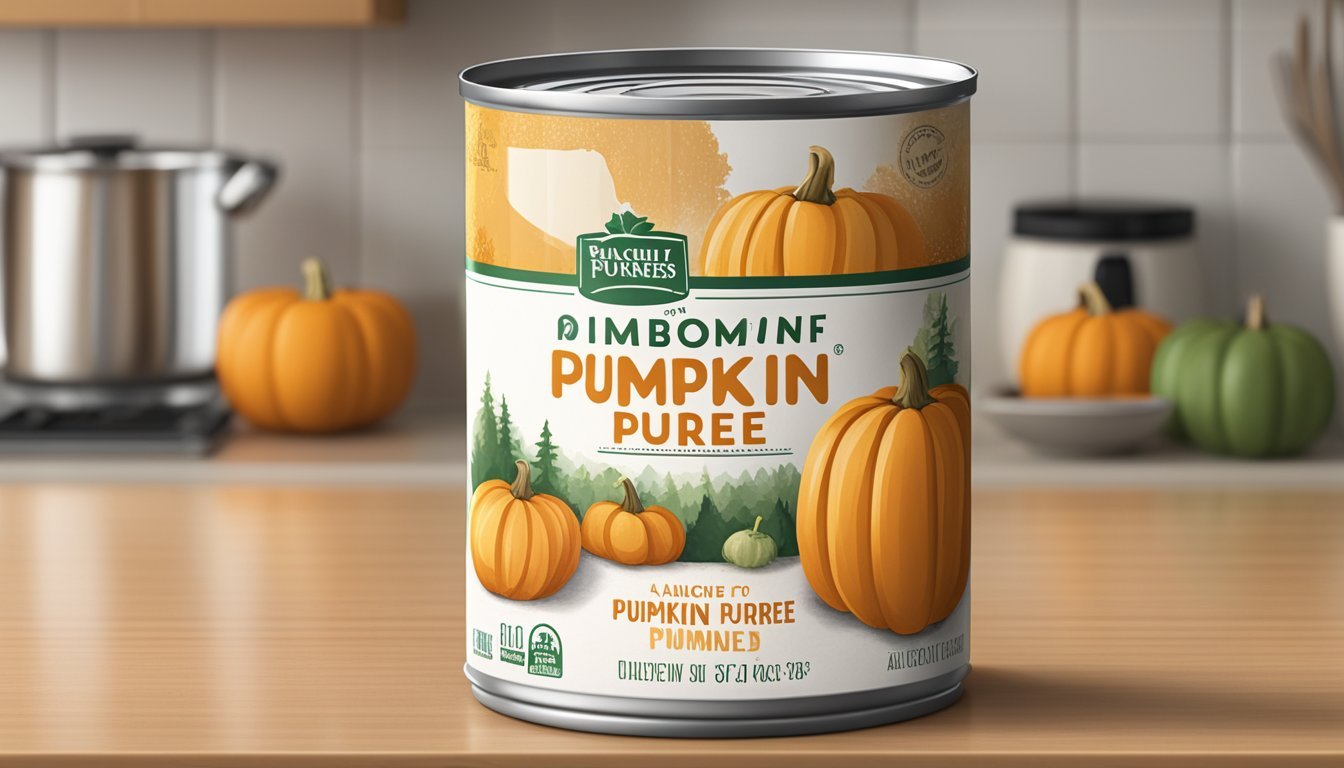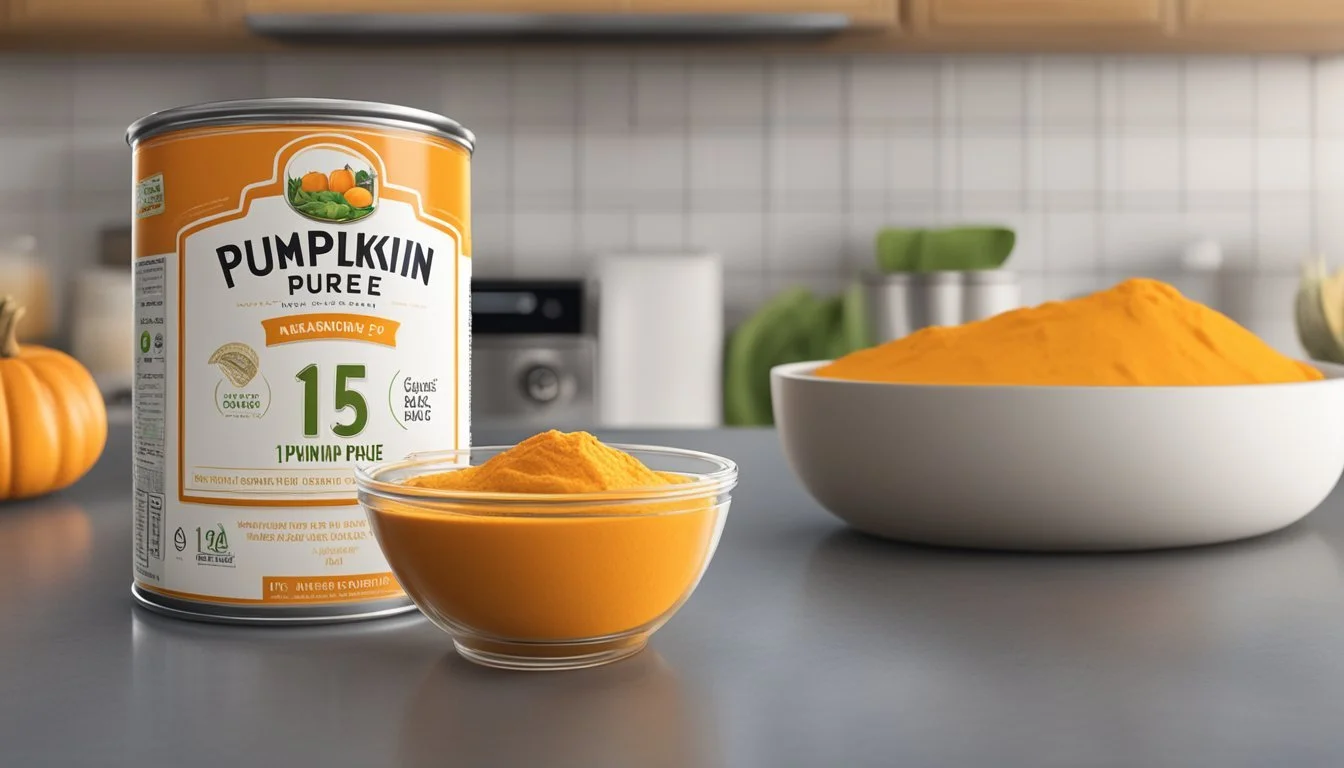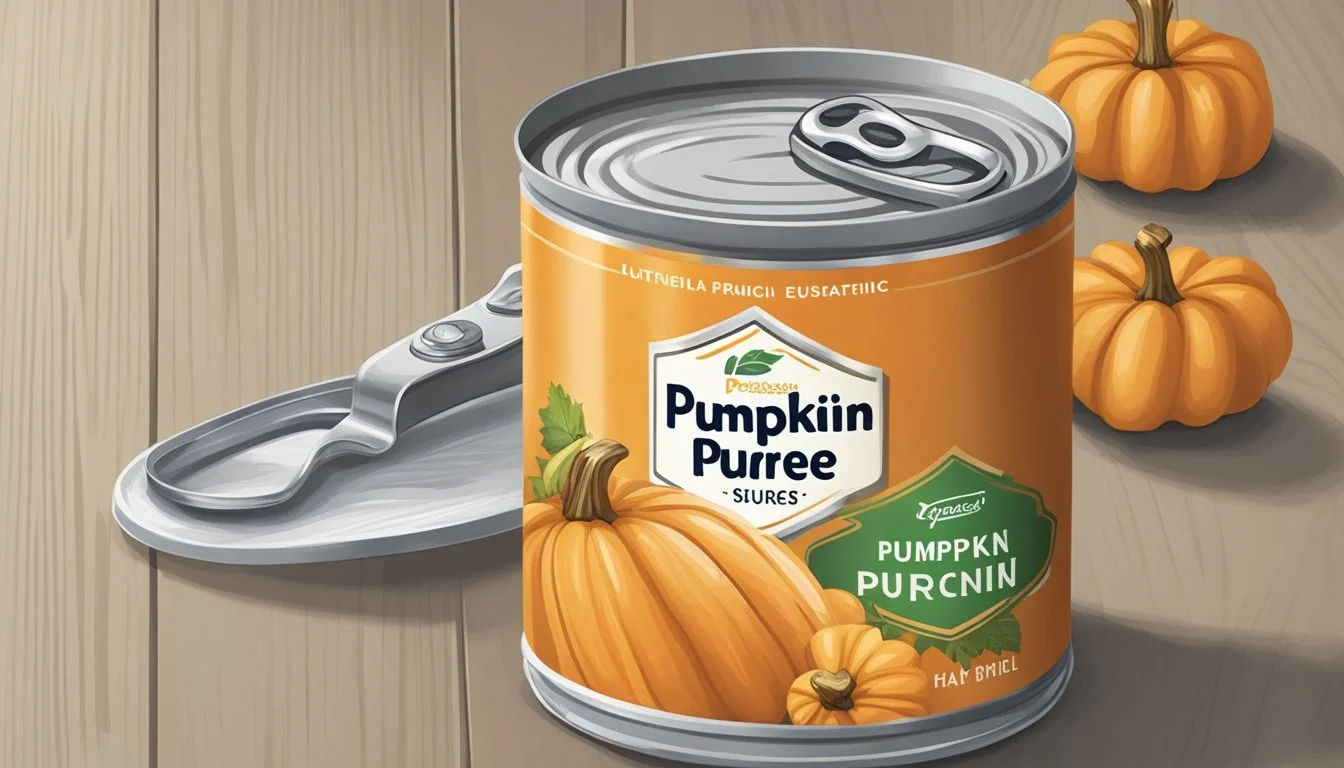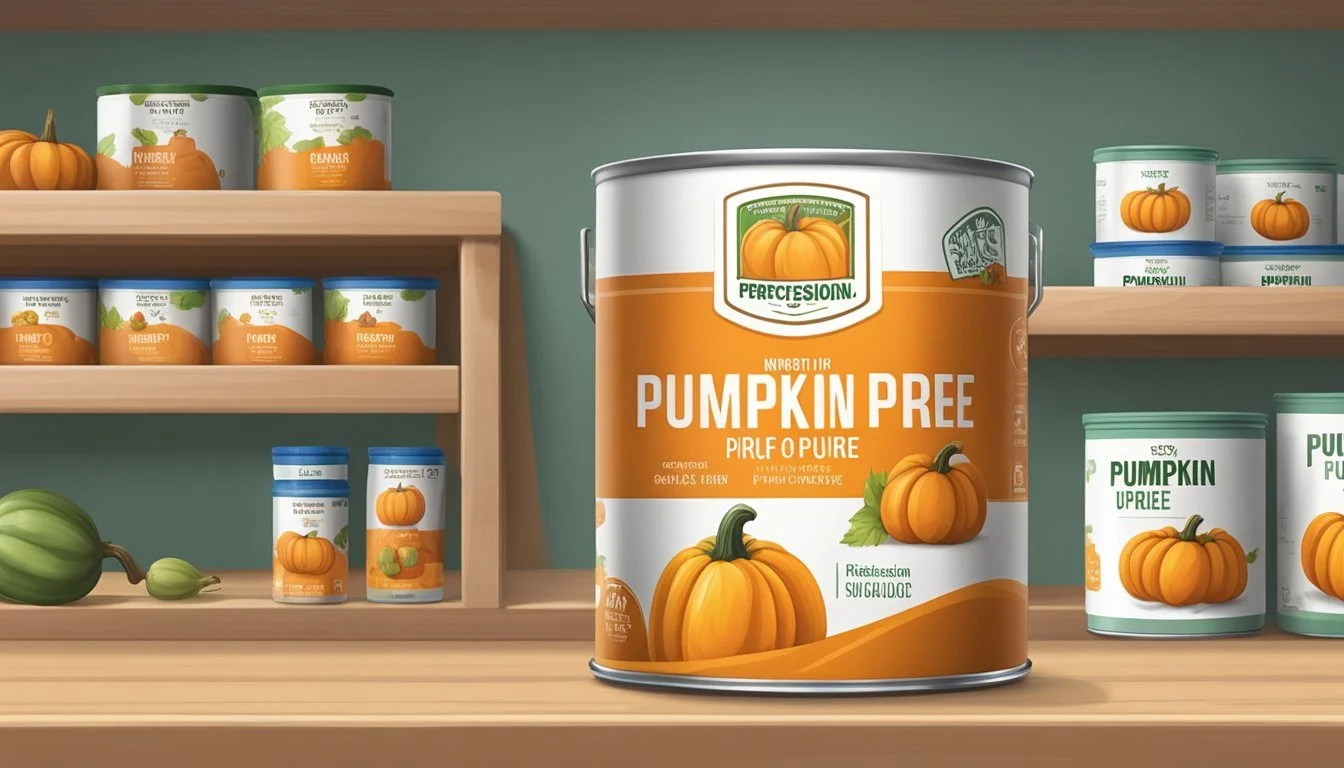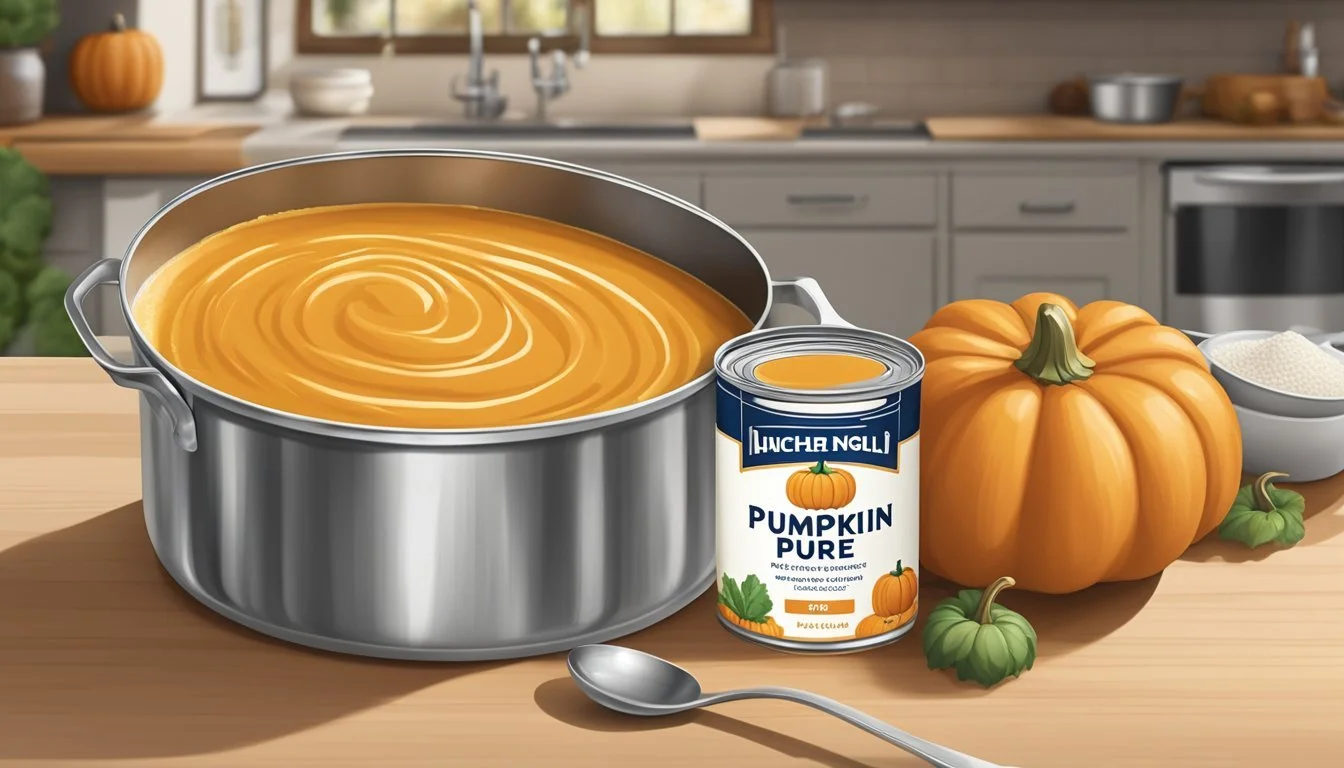How Many Ounces in a Can of Pumpkin Puree
Standard Sizes and Measurements
When purchasing canned pumpkin puree, it's essential to understand the relationship between weight and volume to accurately follow recipes. A standard can of pumpkin puree typically contains 15 ounces. This amount of puree plays a crucial role in many recipes, especially during the fall season when dishes such as pumpkin pies and soups become particularly popular.
Understanding the conversion of ounces to cups is beneficial for home cooks and professionals alike. Approximately 1.875 cups of pumpkin puree correspond to a 15-ounce can. This measure slightly falls short of the 2-cup mark, which is an important note for those looking to substitute canned pumpkin with fresh equivalents or needing precise measurements for their culinary creations.
Consumers may also encounter larger cans of pumpkin puree, such as those holding 29 ounces. For these, the volume translates to about 3.5 cups of puree. Regardless of the size, knowing the equivalent in cups helps cooks adapt and scale recipes effectively, ensuring delicious results with the correct pumpkin puree proportions.
Understanding Pumpkin Puree
Pumpkin puree is a versatile ingredient widely used in both sweet and savory recipes, particularly known for its high fiber content and presence of vitamin A. It ranges from homemade to commercially canned products, each with specific characteristics and uses in cooking and baking.
Composition and Types
Pumpkin puree is made primarily from varieties of winter squash, including sugar pumpkins and pie pumpkins. These types are preferred for their sweetness and smooth texture compared to other squashes like acorn or butternut squash. The puree consists of the flesh of the pumpkin and does not include the skin, seeds, or pulp.
Nutritional Profile
The puree is rich in fiber, vitamin A, and other nutrients, making it a healthy addition to meals. A single cup of pumpkin puree can provide more than the recommended daily intake of vitamin A.
Culinary Uses
In the kitchen, pumpkin puree is a foundation for pumpkin pie, pumpkin bread, and other holiday favorites. It's also used in sweet and savory recipes such as pumpkin cheesecake, pumpkin cookies, pumpkin soup, and even in beverages like pumpkin spice lattes.
Homemade vs. Canned
Homemade pumpkin puree is made by roasting fresh pumpkins and blending the flesh, providing a fresher taste. Canned pumpkin puree, while convenient, can have a varying consistency and might include a blend of different types of squash.
Pumpkin Puree Measurements
Typically, a 15-oz can equals about 1 3/4 to 2 cups of pumpkin puree, whereas a 29-oz can includes approximately 3 1/2 to 3 3/4 cups. Understanding these measurements is crucial for accurately following recipes.
Common Pumpkin Products
Aside from puree, pumpkins are used to make products like pumpkin pie filling, which includes added spices and ingredients for convenience in baking pies.
Pumpkin Seasonality
Pumpkins are synonymous with the fall season and are prominently featured during Thanksgiving and other holidays. They are typically harvested and available fresh in the autumn, though canned puree can be found year-round.
Preparing Pumpkin Puree
The transformation of a raw pumpkin into a smooth, velvety puree requires careful selection, appropriate roasting, and meticulous blending techniques. Achieving the perfect consistency and flavor profile is key in this process.
Selecting the Right Pumpkin
For the best puree, one should opt for smaller sugar pumpkins or pie pumpkins, which are sweeter and less fibrous than large carving pumpkins. The flesh of these pumpkins is denser and they have a lower moisture content, making them ideal for cooking and baking.
Roasting Techniques
Roasting enhances the natural sugars within the pumpkin. Preheat the oven to 350°F (176°C) and prepare the pumpkin by cutting in half, discarding the stem, and scooping out the seeds and pulp—reserve the seeds for roasting, if desired. Place the halves cut-side down on a baking sheet and roast until the flesh is tender, which typically takes around 45-60 minutes.
Pureeing Process
Once the pumpkin is soft and cool enough to handle, scoop the flesh into a food processor or blender. For a more rustic texture, one can use a potato masher. Puree until smooth; if the mixture is too dry, add a bit of water to achieve the desired consistency. Strain the puree through a fine-mesh strainer or cheesecloth to remove any remaining pulp for a silkier texture.
Enhancing Flavor
To elevate the taste, mix the pumpkin puree with a pinch of sugar, spices such as cinnamon or nutmeg, or even a dash of salt, depending on the recipe's requirements. This enhancement is especially beneficial when the puree is used for pies or other baked goods.
Alternative Cooking Methods
Aside from roasting, alternative methods include steaming, using high-pressure steam in an Instant Pot, or even microwaving. These methods can be quicker and help retain more nutrients, but may result in a higher moisture content that will need to be reduced for some recipes.
Pumpkin Puree Recipe
For a basic homemade pumpkin puree recipe:
Preheat oven to 350°F (176°C).
Halve the pumpkin, remove seeds (optional: save for roasting) and pulp.
Place halves face down on a baking tray and roast until tender.
Scoop out the flesh and puree in a blender or food processor.
Strain with cheesecloth if needed to eliminate excess water.
Season according to taste or recipe needs.
This pumpkin puree can be used in various recipes like soups, pies, and pastries, infusing a rich, autumnal flavor into homemade dishes.
Packaging and Storage
Proper storage and packaging are essential for maintaining the quality and usability of pumpkin purée. Cans of pumpkin purée typically range in size, with common options being 15 ounces and 29 ounces. Consumers should transfer leftover purée from the can to appropriate storage containers to preserve freshness and prevent spoilage.
Packaging for Preservation
For preservation, pumpkin purée should be stored in airtight containers to prevent contamination and oxidation. Glass jars or plastic containers with tight-fitting lids are suitable options. A vacuum sealer can further extend shelf life by removing excess air from the packaging.
Refrigeration Guidelines
When refrigerating leftovers, pumpkin purée should be placed in an airtight container to prevent it from absorbing odors from other foods. Refrigerated purée should be used within one week to ensure quality and safety. The refrigerator temperature must be kept at 40°F (4°C) or below to minimize the risk of bacterial growth.
Freezing and Thawing
For longer storage, pumpkin purée can be frozen. To freeze, portion the purée into usable amounts, label each container with the type and date of storage, and place it in the freezer. This minimizes frost build-up and allows for easier thawing. When ready to use, thaw the pumpkin purée in the refrigerator to avoid the risk of bacterial growth associated with counter-top thawing. Ideally, purée should be used within a year of freezing.
Proper Labeling of Contents
Labeling containers clearly with the volume, weight, and date of storage will help keep track of freshness and avoid food wastage. It's crucial to note whether the pumpkin purée is homemade or canned, as this can affect the duration for which it remains usable. Bold, clear handwriting or printed labels are essential for easy identification.
Using Pumpkin Puree in Recipes
Pumpkin puree is a versatile ingredient commonly used in both sweet and savory dishes, ranging from traditional pumpkin pies to hearty soups. Consistency and flavor are essential when incorporating pumpkin puree into recipes.
Sweet Applications
In sweet dishes, pumpkin puree imparts a moist texture and a subtle, earthy flavor that's perfect for fall-inspired treats. Popular sweet recipes with pumpkin puree include:
Pumpkin Pie: The quintessential dessert, with the puree mixed with sugar, eggs, and pumpkin spice for a creamy filling.
Pumpkin Bread & Muffins: Both baked goods benefit from the moisture of the puree, resulting in a tender crumb.
Pumpkin Pancakes & Waffles: A dollop of puree adds a festive twist to breakfast favorites.
Secondary sweets like pumpkin cake and pumpkin rolls are further testament to the puree's baking versatility.
Savory Creations
In savory dishes, pumpkin's natural flavor complements a wide array of ingredients. Savory pumpkin recipes often include:
Pumpkin Soup: A smooth base of pureed pumpkin enriched with stock and cream.
Roasted Butternut Squash: Often interchangeable with pumpkin, adding depth to fall dishes.
Roasted Pumpkin Seeds: Offers a crunchy, nutritious garnish for salads or snacks.
Pumpkin puree can enhance the body of sauces and stews or serve as a stand-in for other squash in recipes.
Adjusting Moisture Levels
Achieving the right moisture content in recipes can be tricky. Bakers adjust liquid amounts to accommodate the additional moisture from the pumpkin puree. In baking, the following guideline helps:
If a recipe doesn’t originally include pumpkin, reduce other liquids proportionately to maintain the desired consistency.
For soups and stews, the thickening property of pumpkin puree can be used to the cook's advantage.
Substitution Tips
Pureed pumpkin can substitute for fats like butter or oil in recipes, which alters the moisture level and reduces calorie content. Common substitution tips include:
Replace up to half the amount of butter or oil with pumpkin puree in baked goods.
Use equal parts pumpkin puree in place of pumpkin pie filling, understanding that additional sugar and spices may be needed.
When replacing, bear in mind the difference between homemade and canned pumpkin puree; commercial purees may have a more consistent moisture content and texture.
Practical Information
In the realm of baking and cooking, understanding the specifics of canned pumpkin puree is essential, from the standard weight and volume measurements to its shelf life and brand availability.
Average Weight and Volume
Most canned pumpkin puree comes in two standard sizes: a 15-ounce can and a 29-ounce can. A 15-ounce can typically contains about 2 cups minus 2.5 tablespoons of puree. The larger 29-ounce size holds approximately 3.5 cups of pumpkin puree.
Conversion Rates
When converting from ounces to cups, the following rates are useful:
15 ounces = roughly 1.875 cups or just under 2 cups
29 ounces = about 3.5 cups
It should be noted that because puree can vary slightly in consistency, these conversions are approximate.
Shelf Life and Expiration
Unopened canned pumpkin puree has a shelf life that typically spans between 1 to 2 years. After opening, if stored properly in a refrigerator in an airtight container, the puree can last up to about 1 week. Always check the expiration date on the can for the most accurate information.
Availability and Brands
Canned pumpkin puree is widely available in the United States, especially during the fall season. Popular brands include Libby's and Farmer's Market, and they are often found in the baking aisle of most grocery stores. Availability can vary throughout the year, with a noticeable increase around holiday seasons when pumpkin-flavored recipes are in high demand.

